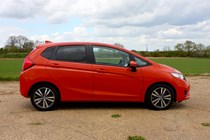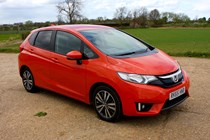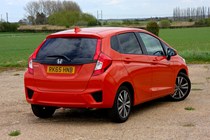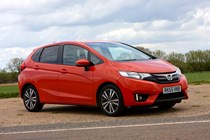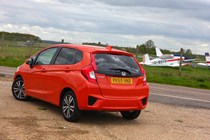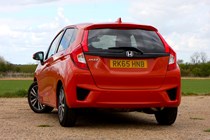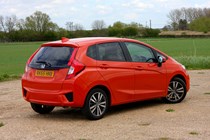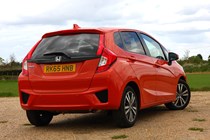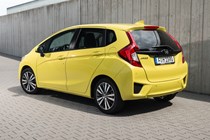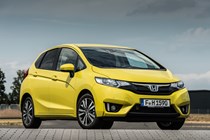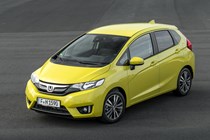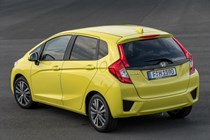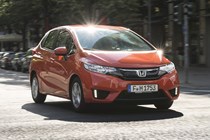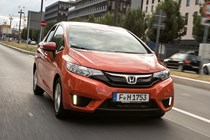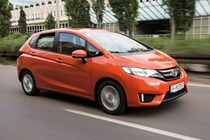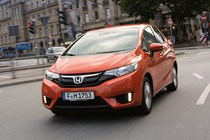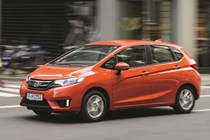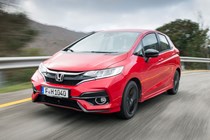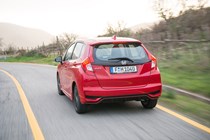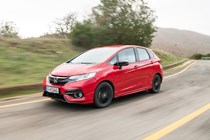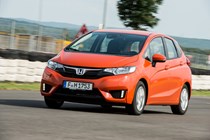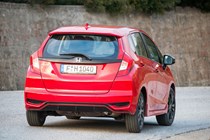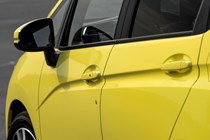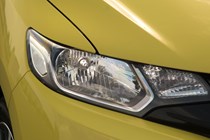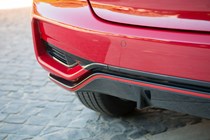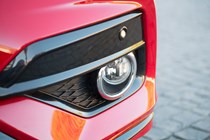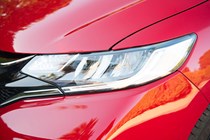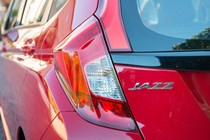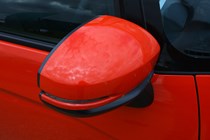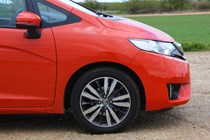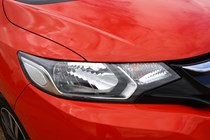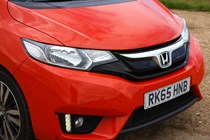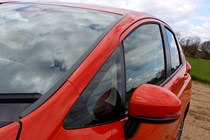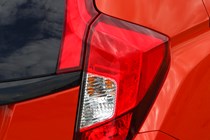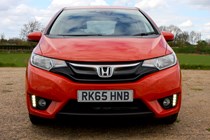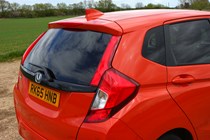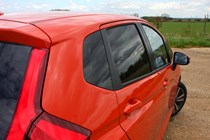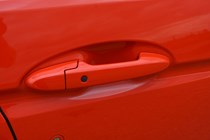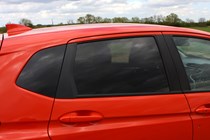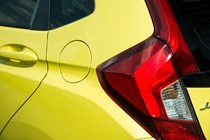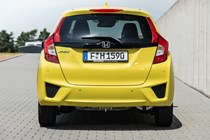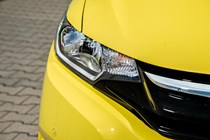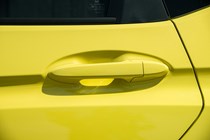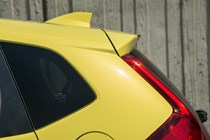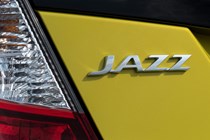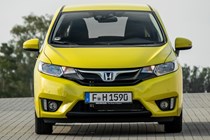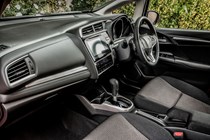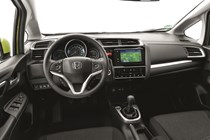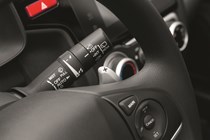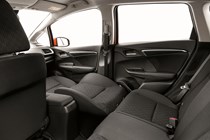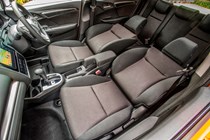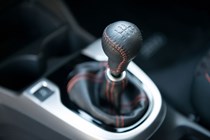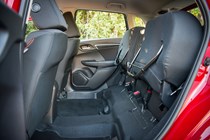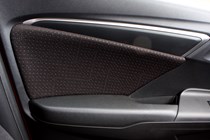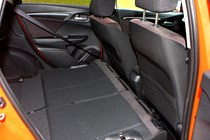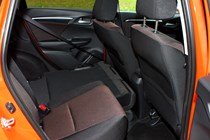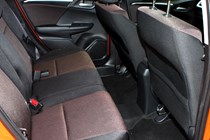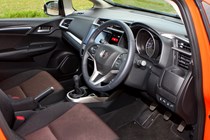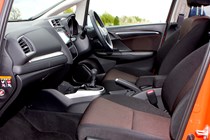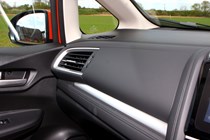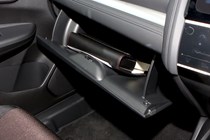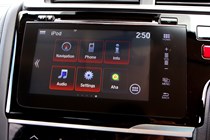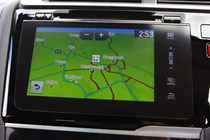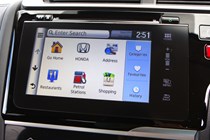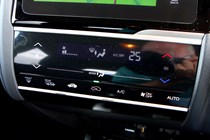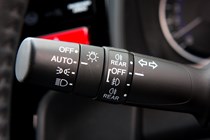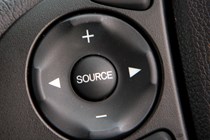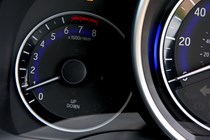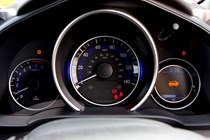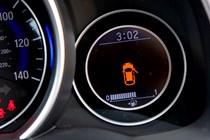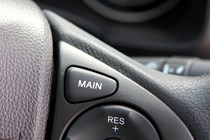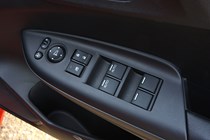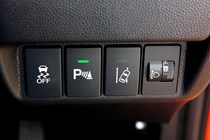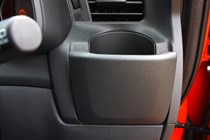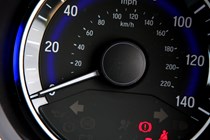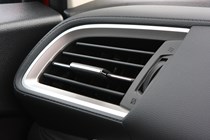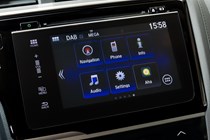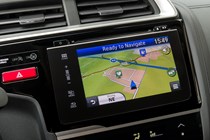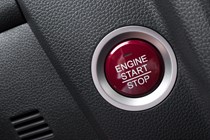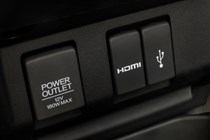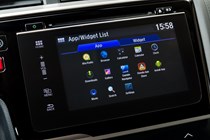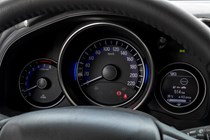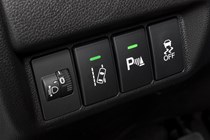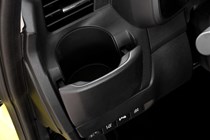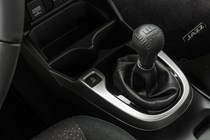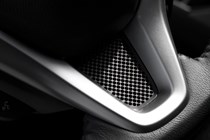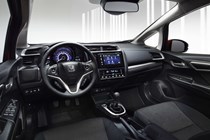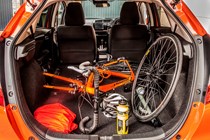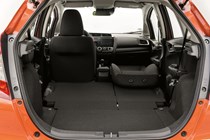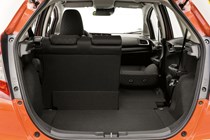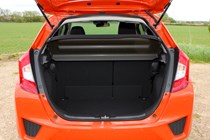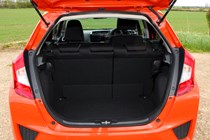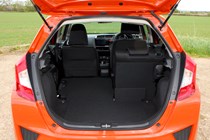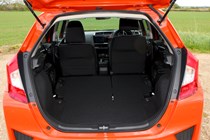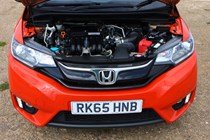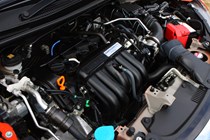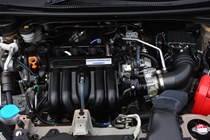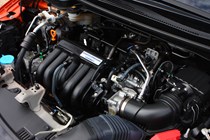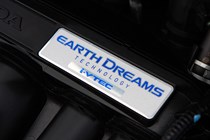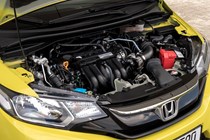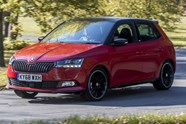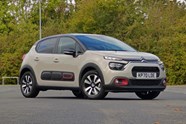
Honda Jazz Hatchback (2015-2020) review
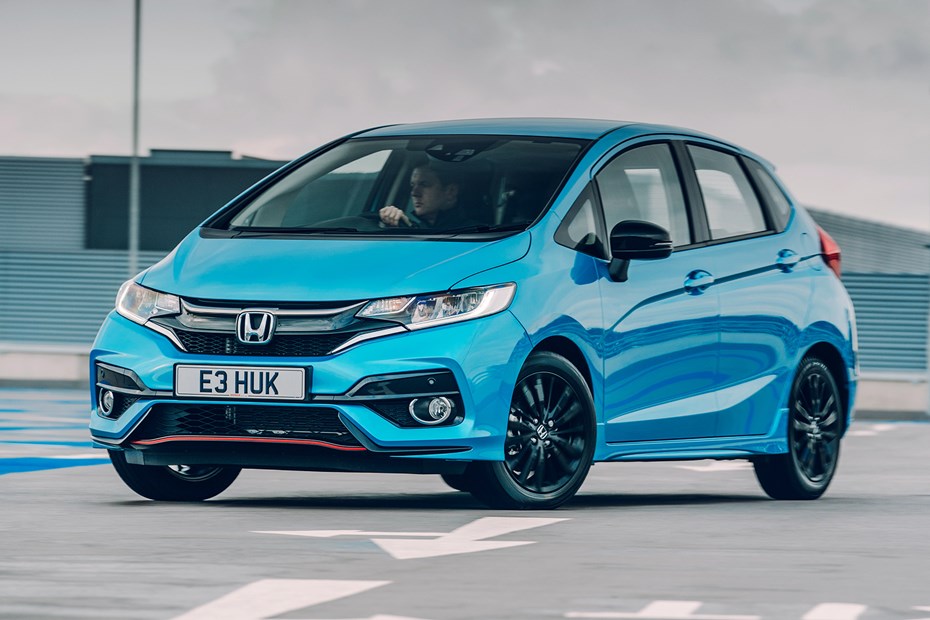
At a glance
| Price new | £13,955 - £19,300 |
|---|---|
| Used prices | £4,637 - £14,649 |
| Road tax cost | £20 - £195 |
| Insurance group | 13 - 19 |
Get an insurance quote with

|
|
| Fuel economy | 42.8 - 48.7 mpg |
| Range | 414 - 537 miles |
| Miles per pound | 6.3 - 7.1 |
| Number of doors | 5 |
| View full specs for a specific version | |
Available fuel types
Petrol
Pros & cons
- Excellent space
- Good visibility
- Solid build quality
- Tidy handling
- Media system feels dated
- Some hard interior plastics
- Restricted engine choice
- Automatic option not great
Honda Jazz (15-20) rivals
Overview
The Honda Jazz Mk3 – the third-generation model – was sold in the UK from 2015 to 2020. Like all versions of this decent small car, it majors on providing exceptionally practical space for five people in a compact footprint. Highlight feature is unquestionably the Magic Seats – a multi-way folding rear seating arrangement that allows it to carry a variety of items you wouldn’t expect could possibly fit into this kind of vehicle.
As such, for most buyers it doesn’t matter that the Jazz is not particularly exciting to drive. Although it does benefit from Honda’s petrol engine expertise and can be had with a fantastic manual gearbox, the alternative continuously variable transmission (CVT) automatic is something of a joy killer and the chassis is very much of the easy-going variety.
Honda Jazz Mk3 known fault and common problems
The reason most people choose to buy a Honda is quite simple: almost every model this Japanese manufacturer has ever made has justifiably garnered an outstanding reputation for reliability. The Mk3 Jazz is no different – to the extent we’ve had to work far harder than usual to find 10 points to look out for to fit our format below.
As a still relatively youthful car, you aren’t likely to find a bargain basement example of a used Honda Jazz Mk3. The cheapest examples are falling just under the £7,000 mark now, and will be approaching 100,000 miles. A late example on a 2019 numberplate could set you back as much as £20,000. If shopping for one of those we recommend looking within the Honda dealer network for the added peace of mind – though there really isn’t too much to worry about, as we’ll see.
Buying guide
Common issues, and what to look for if you’re looking at getting one.
1) Gearboxes
Not really a common fault, but it is worth keeping these in fresh fluid. Particularly the CVT, which needs attending to every couple of years, but even the manual gearboxes last better with regular oil changes. So, check for signs of regular maintenance in the service history and look out for strange noises, vibrations and hesitation on the test drive.
2) Tyre pressure monitoring system (TPMS)
Owners have reported this system for erratic behaviour. But frankly all TPMS of this era can be a little flaky, so we’d hardly look to this as a major area of concern. Aftermarket tyre pressure monitoring systems are available, though we understand the Honda one isn’t usually expensive to fix.
3) Fuel injectors
Some very minor reports of problems with fuel injectors on the 1.5-litre engine. This has been a bigger issue in the USA – where the Jazz is sold as the Fit – but the North American cars were built in a different factory.
4) Carbon build-up in 1.5-litre engines
The 1.5-litre engine uses direct injection, and in common with most engines of this type it can be susceptible to the build-up of carbon deposits, which can cause running issues and reduction in fuel economy. Good quality fuel will help, or you can try an engine-cleaning additive or service.
The 1.3-litre engine uses port injection, and doesn’t suffer in the same way (we still recommend using quality petrol, though).
5) Oil dilution
A bigger issue for the 1.5 but can also be a problem for the 1.3. This is generally caused by lots of short journeys where the car doesn’t get properly up to temperature, and refers to the engine oil getting contaminated with petrol. This reduces the oil’s effectiveness and can cause premature engine wear.
In other words, that super-low mileage example from 2015? Maybe reconsider…
6) Minor refinement issues
Some owners have complained of noisy door seals and the car generating lots of wind noise at speed. Lubricating the door seals – presumably to soften them – apparently helps. But this is a small car, you shouldn’t expect it to be as refined as a Mercedes S-Class.
7) Clutch
Unlikely to be a problem now, but some early cars suffered with clutch problems. Worth checking the clutch pedal feels normal on the test drive, even so – and ideally make sure you test a few examples to understand what normal means for one of these.
On a side note, lots of short urban journeys with drivers who may not perhaps have quite the level of finesse they used to may cause premature clutch wear as well. If the biting point is close to the top of the pedal’s travel, budget – or negotiate – for a fresh clutch pack.
8) Electronics
Again, largely a problem for early cars but there have been issues with infotainment systems and factory fitted sat-nav. By modern standards these are likely to feel out of date now anyway, but it’ll be annoying if they don’t work properly, so do check. Some very good aftermarket infotainment is available these days but not everyone likes non-original equipment or the additional expense.
9) Interior condition
With those clever Magic Seats in the back, it’s possible the Jazz you’re looking at has been used to haul some slightly unusual items. So have a good look at the condition of the interior, checking for scratches and other damage, to make sure you’re happy it matches the asking price.
Check the seats move as they should while you’re there. And if the car has been used for transporting children, make sure there aren’t any sticky residues in the nooks and crannies.
10) Exterior condition
As these will often be city cars it would be worth checking the corners and wheels for impact damage even if the typical buyer – sorry, there’s no escaping it – wasn’t also of the older persuasion. Only you’ll know what your standards are like in this kind of instance; as ever just be happy that the condition is in keeping with the price.
What models and trims can you buy?
The third-gen Honda Jazz was sold with a choice of just two petrol engines – neither of which is likely to set your hair on fire when it comes to performance. There are no turbos here, so you have to use plenty of revs to extract maximum power, and in any case this is only 103hp from the 1.3-litre model and 130hp from the 1.5-litre model. Not much at all by modern standards.
A rather lovely manual gearbox was fitted as standard, though many were sold with the CVT auto, which is decidedly less lovely but does save on clutch wear around town. All versions of the Jazz Mk3 take the form of a five-door hatchback.
Trim levels are labelled S, SE, EX and Sport in rising order of plushness – with a Navi on the end where factory sat-nav is fitted. The Jazz was relatively expensive for a small car when new, trading on its quality, but standard equipment is in keeping with the time rather than overly generous.
Over the next few pages, we’ll review each aspect of the third-generation Honda Jazz, taking into account its practicality, comfort, fuel economy and performance. If you’re short on time, you can also skip to our verdict page to see if we recommend the Jazz Mk3 as a good used car.





